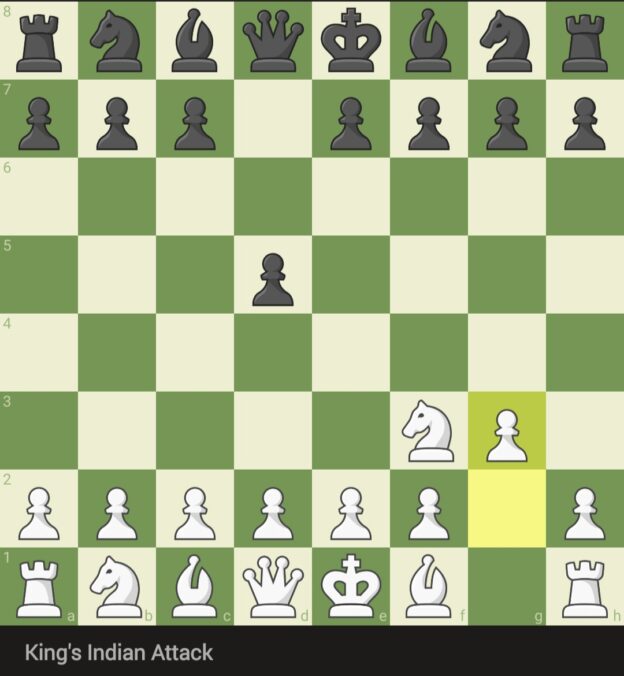In the realm of chess openings, while many sequences are rigid and demand meticulous preparation, there are systems that stand out for their fluidity and adaptability. The King’s Indian Attack (KIA) epitomizes such a flexible approach. Less an opening than a system, the KIA offers players a cohesive set of ideas applicable against various responses, fostering creativity and strategic depth.
Origins and Evolution
The King’s Indian Attack can be thought of as the mirror image of the King’s Indian Defense (KID), with colors reversed. While the KID is a response to 1.d4, the KIA typically arises after 1.Nf3, with White subsequently adopting a setup that includes g3, Bg2, and d3. Over the years, it evolved as a weapon to sidestep mainstream opening theory, focusing more on plans and ideas than specific move orders.
Fundamental Ideas
Central to the KIA are several strategic motifs:
- Pawn Structure: White’s d3-e4 pawn center is flexible and can lead to various pawn breaks, e5 being the most thematic. This break often opens the e-file and can grant White a spatial advantage.
- Piece Placement: The fianchettoed bishop on g2, combined with the knight on f3 and a queen’s knight sortie to d2, allows White to exert pressure along the central and queen’s side squares.
- Kingside Attack: Often, White undertakes a pawn storm on the kingside, with moves like h4 and g4, aiming to create weaknesses around Black’s king.
- Central and Queenside Play: Depending on Black’s setup, White can also expand on the queenside with moves like a4 and b4, or in the center with d3-d4.
Adaptability Against Various Defenses
One of the strengths of the KIA is its versatility. It can be employed against various setups by Black:
- Versus the French: After 1.e4 e6 2.d3 d5 3.Nd2, White can smoothly transition into the KIA, bypassing mainline French Defense theory.
- Against the Sicilian: Following 1.e4 c5 2.Nf3 followed by g3, the game can transpose into KIA structures.
- Other Setups: The KIA is also a viable choice against the Caro-Kann, the Pirc, and other semi-open games.
Prominent Practitioners
While many players have employed the KIA over the years, Bobby Fischer is perhaps its most famous advocate. Fischer, known for his deep opening preparation, utilized the KIA as a surprise weapon, especially in simultaneous exhibitions. His games showcased the system’s inherent dynamism and aggressive potential.
Conclusion
The King’s Indian Attack stands as a testament to the idea that chess is not just about rote memorization but also about understanding plans and strategic ideas. In an era dominated by computer analysis and deep opening preparation, the KIA offers a refreshing detour, emphasizing creativity, adaptability, and the joy of outplaying an opponent over the board. It remains an excellent choice for players who cherish flexibility and strategic richness in their games.
